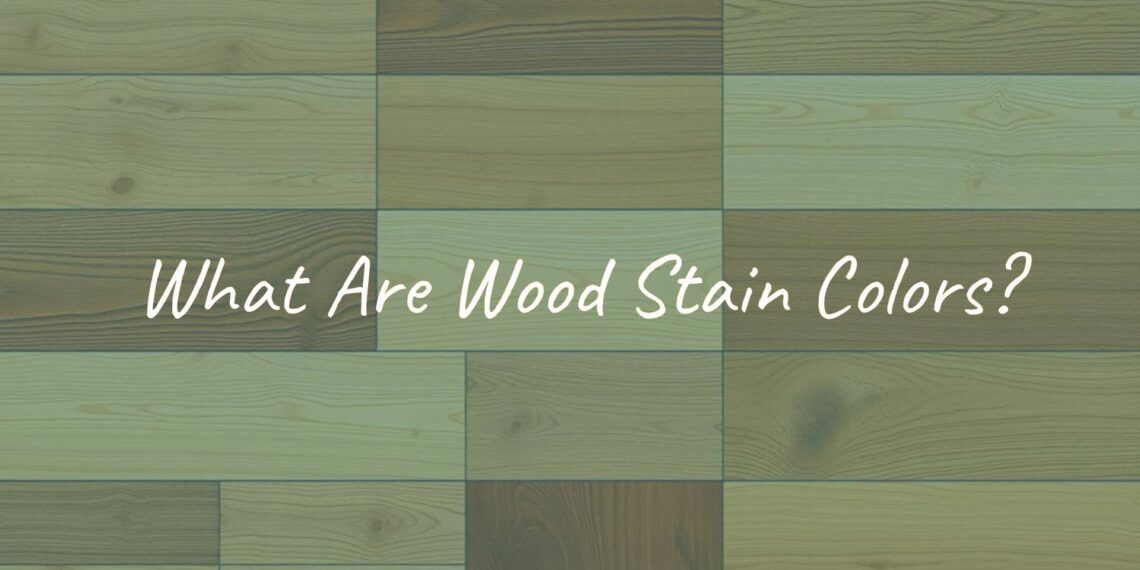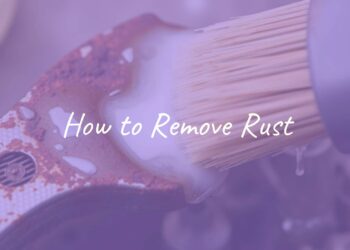Wood stain colors are products used to change the color of wood while letting its natural grain and character show through. Unlike paint, stains soak into the wood instead of sitting on top of it. This means they highlight the unique patterns and features found in each piece. Stains not only make wood look better, but they also help protect it. By soaking into the wood, stains shield it from moisture, which can help prevent problems like rot and decay.
There are many wood stain colors to choose from, just as there are many types of wood. You can find traditional colors like browns and reds, modern grays, or even bright blues and greens. The final look depends not just on the stain color, but also on the type of wood and how porous or dense it is. This mix makes each project different and ensures the finished product has a look that’s both attractive and long-lasting.

Types of Wood Stain Colors and Finishes
There are several types of stains and finishes, and knowing their differences can help you pick the right stain for your project. The type you choose affects both how you apply it and how your wood will look in the end. Main differences include what the stain is made of and how much of the wood grain it shows.
Oil-Based vs. Water-Based Wood Stain Colors
Oil-based stains use oil (such as linseed oil) as their main ingredient. These stains soak into the wood deeper, giving a richer, classic look. They dry slowly, so you have more time to apply and blend them, but you have to wait longer before adding another coat. Cleaning up oil-based stains requires mineral spirits, and you might need to wear a mask because of the stronger smell.
Water-based stains use water, making them easier to thin and clean up-you usually just need water. They dry quickly, which saves time but means you need to work fast to avoid streaks or a patchy look. Water-based stains don’t soak in as much as oil-based ones, so they tend to show more of the wood’s surface details. They may also raise the wood grain, so a light sanding between coats often gives a smoother finish.

Gel Stains
Gel stains are thicker than regular stains and work more like a paint that lightly covers the wood’s surface. Because they don’t soak in much, they’re great for woods that easily end up with uneven stain, like pine or maple. Gel stains also need less sanding beforehand, since they can help mask small flaws. Cleaning up gel stains usually needs mineral spirits, just like oil-based stains.
Solid, Semi-Transparent, and Transparent Stains
| Type | Coverage | Use | Example |
|---|---|---|---|
| Transparent | Shows most grain and natural color | Highlighting wood’s natural beauty | Minwax “Natural 209” |
| Semi-Transparent | Adds some color; grain still visible | Changing tone but still showing texture | “Classic Gray MW271” |
| Solid | Mostly hides grain, strong color | Big color changes or hiding flaws | “True Black MW274” |
The amount of color in a stain determines how much of the wood’s grain and texture you’ll see. Choose transparent stains if you want the wood’s natural look to stand out. Go with semi-transparent stains for a bit more color, and solid stains if you want bold color or to cover up imperfections.

Popular Wood Stain Color Families
Wood stains come in a wide range of colors. Here are the most common groups and some examples:
Brown, Walnut, and Espresso Hues
- Brown stains are classic and fit many styles.
- Walnut stains are deep but with gray or red tints; example: “Dark Walnut MW2716.”
- Espresso stains are almost black and look modern; example: “Espresso MW273.”
- Other favorites: “Golden Brown MW1023,” “Chestnut MW1176.”
Gray and Charcoal Wood Stains
- Grays are popular for a modern or rustic look.
- Range from light (“Classic Gray MW271”) to dark (“Charcoal Gray MW285”).
- Great for farmhouse or contemporary spaces.
Natural, Honey, and Golden Tones
- Bring out the natural warmth of wood.
- Give a yellow or amber look with “Natural MW209” or “Golden Oak MW210B.”
- Honey shades (“Honey MW272”) create a friendly, traditional feel.
Red, Cherry, and Mahogany Shades
- Add warmth and a classic touch.
- “Cherry MW235” gives a reddish look that deepens over time.
- “Mahogany MW1180” and “Red Mahogany MW225” provide rich, deep colors.
- Bolder reds like “Sedona Red MW222” make a strong statement.
Black and Deep-Tone Stains
- Give a bold, modern, or minimalist style.
- “True Black MW274” and “Ebony MW2718” are top choices for dark finishes.
- Other dark browns like “Jacobean MW2750” offer depth without pure black.
Whitewash and Light, Neutral Stains
- Perfect for a light, airy look-great for coastal or Scandinavian designs.
- “Simply White MW275” and “Pure White MW1081” give a faded, clean finish.
- Options like “Rustic Beige MW281” are good for softer, neutral effects.
Unconventional Colors: Blue, Green, and Custom Options
- Options like blue or green offer unique and personal results.
- Popular blues: “Marine Blue MW1060,” “Denim Blue MW1070.”
- Popular greens: “Green Tea MW1027,” “Hunter Green MW1039.”
- Many brands also let you custom mix stains for a special look.
How Wood Species Affect Stain Color Results
The type of wood you use changes how stain looks after it’s applied. Different woods absorb stain differently, and natural wood color mixes with the stain to create new shades. For example, pine is light and soaks up more stain, often getting darker, while walnut is darker and absorbs less.
Color and Grain Variations by Wood Type
- Each wood type-such as pine, oak, or maple-has its own color and grain pattern.
- Lighter woods make stains look brighter or more intense.
- Darker or denser woods can make stains look lighter or softer.
- The grain of the wood can stand out even more, or be less visible, depending on the stain.
Because of these differences, the same stain color won’t look the same on every wood. Always check how a stain appears on your actual wood before final application.
Testing Colors on Your Wood Surface
- Find a spot on your project that won’t be seen-like underneath or on the back.
- Apply your chosen stain using your intended application method.
- Let the stain fully dry, then check the color and texture.
- If using a topcoat, apply it to your test area as well, since it can change the final look.
This step helps you avoid surprises and get the results you want.

Choosing the Right Wood Stain Color
Picking a stain color is more than just picking your favorite shade. The right color will improve both the look and feel of your space or item.
What Factors Should You Keep in Mind?
- Consider the style and colors already in your room or project area.
- Decide if you want your stained wood to match or stand out.
- Think about the “mood”-warm stains make things feel cozy, cool stains look modern or rustic.
- The purpose of your project matters-will it need to survive spills, heat, or sunlight?
- Natural light in the area affects how stain looks: dark stains can make a space feel smaller with little light, while light stains can brighten things up.
Use a stain color chart to compare options, but test on your wood to see the real effect.
How to Match Stain with Existing Finishes
- Check the undertones of current stained wood-are they warm (red, yellow) or cool (gray, blue)?
- Try to choose stains with similar undertones for a good match.
- If you can’t match exactly, choose colors in the same family or go for a deliberate contrast.
- Some suppliers offer custom blends if an exact match is important.
Understanding Undertones and Lighting
- Wood and stain colors have hidden tones (undertones) that can affect the final look.
- Mixing cool stains with warm woods (or the opposite) can change the expected color.
- Always view samples in the same lighting as the finished project-different bulbs or sunlight can change how the color looks.
Interior vs. Exterior Wood Stain Colors
Indoor and outdoor stains are not the same. Where you’ll use your stained wood helps determine which stain is best and how long it’ll last.
Color Longevity and Weather Resistance
- Exterior stains are made to handle sunlight, rain, and climate changes.
- They have special ingredients to keep colors from fading or letting mold grow.
- Interior stains focus on looking good and being easy to use; they are not meant for outdoor use because they can fade or peel quickly outside.
Best Colors for Outdoor vs. Indoor Projects
- Outdoor stains often use earthy colors (browns, grays) to look natural and hide dirt.
- Brands like Sherwin-Williams offer many choices for decks, fences, or siding that protect and look good.
- Indoors, you can use just about any stain color to match your decorating style. You have more freedom because you don’t have to worry about weather damage.
Top Brands and Product Lines for Wood Stain Colors
There are many brands that make good wood stains, with a variety of colors and special features. Here are some of the most well-known:
Overview of Leading Stain Brands
- Minwax: Offers a huge range of stain colors (over 240), including oil-based, water-based, gel, and solid stains. Their color library is easy to browse by color family or finish.
- Sherwin-Williams: Makes stains for both indoor and outdoor projects, focusing on matching wood grain and lasting color. They offer options for many different uses.
- DuraSeal: Popular for wood floors, their stain gallery shows how colors appear on different woods, making it easier to see the final result.
Specialty Product Lines and Features
- Minwax has products like PolyShades (combining stain and topcoat), Color Wash for a faded look, and tintable options for creating custom colors.
- Sherwin-Williams offers lines made for exterior use, as well as concrete stains for other surfaces. Some products include extra protection against sun and water damage or are quick-drying for convenience.
These extra features can help meet special needs and make your project easier.
Mistakes to Avoid When Selecting and Applying Wood Stain Colors
Even if you pick a great stain color, you might run into problems during staining. Here are some common mistakes and how to prevent them:
Common Color Matching Challenges
- Stain colors look different on every kind of wood, so a match on one wood might not match on another.
- Topcoats like polyurethane can change the stain’s color slightly, usually warming or deepening it.
- Sample chips or online images may not show what the stain will really look like on your wood and in your lighting.
- The best way to avoid problems is to always test stain and topcoat on your actual wood first.
Avoiding Uneven or Blotchy Stain
- Some woods (pine, maple, cherry) soak up stain unevenly and end up with blotches.
- Using too much stain or not wiping it off in time can make dark spots worse.
- Poor sanding or leftover dust also causes a bad finish.
- To avoid this, sand well, clean the wood, and apply stain evenly in small areas, wiping any extra off right away.
- On blotchy woods, use a pre-stain conditioner or consider gel stains for a more even color.
When to Use a Pre-Stain Conditioner
- Pre-stain conditioners help softwoods like pine absorb stain evenly, reducing blotchy spots.
- Apply conditioner before staining, following the instructions on the label.
- This extra step is well worth it for a smoother, more even look, especially if you’re working with woods that usually blotch easily.
How to Apply and Care for Wood Stain Colors
The way you apply and look after wood stain makes a big difference in the finished look and how long it lasts.
Application Techniques for Consistent Color
- Start by sanding the wood evenly and making sure it’s clean and dry.
- If the wood tends to blotch, use a pre-stain conditioner.
- Apply stain in small areas using a brush, foam applicator, or clean rag, making sure to cover evenly.
- Let the stain soak in as long as the product instructions say, then wipe away the extra with a clean cloth.
- If you want a darker color, wait for the first coat to dry before adding another.
Protecting and Maintaining Stained Wood
- Once stained, seal your wood with a clear protective topcoat (like polyurethane or varnish) to guard against scratches and spills.
- Clean stained wood with a soft, damp cloth and avoid rough cleaners or too much water.
- Wipe up spills quickly and occasionally check outdoor projects for signs of fading or wear, reapplying stain as needed every few years.
These care steps will keep your stained wood looking great and lasting longer over time.
















![What to with Scrap Metal? [infographic]?](https://facts-homes.com/wp-content/uploads/2019/07/645413-POPYOV-391-120x86.jpg)





